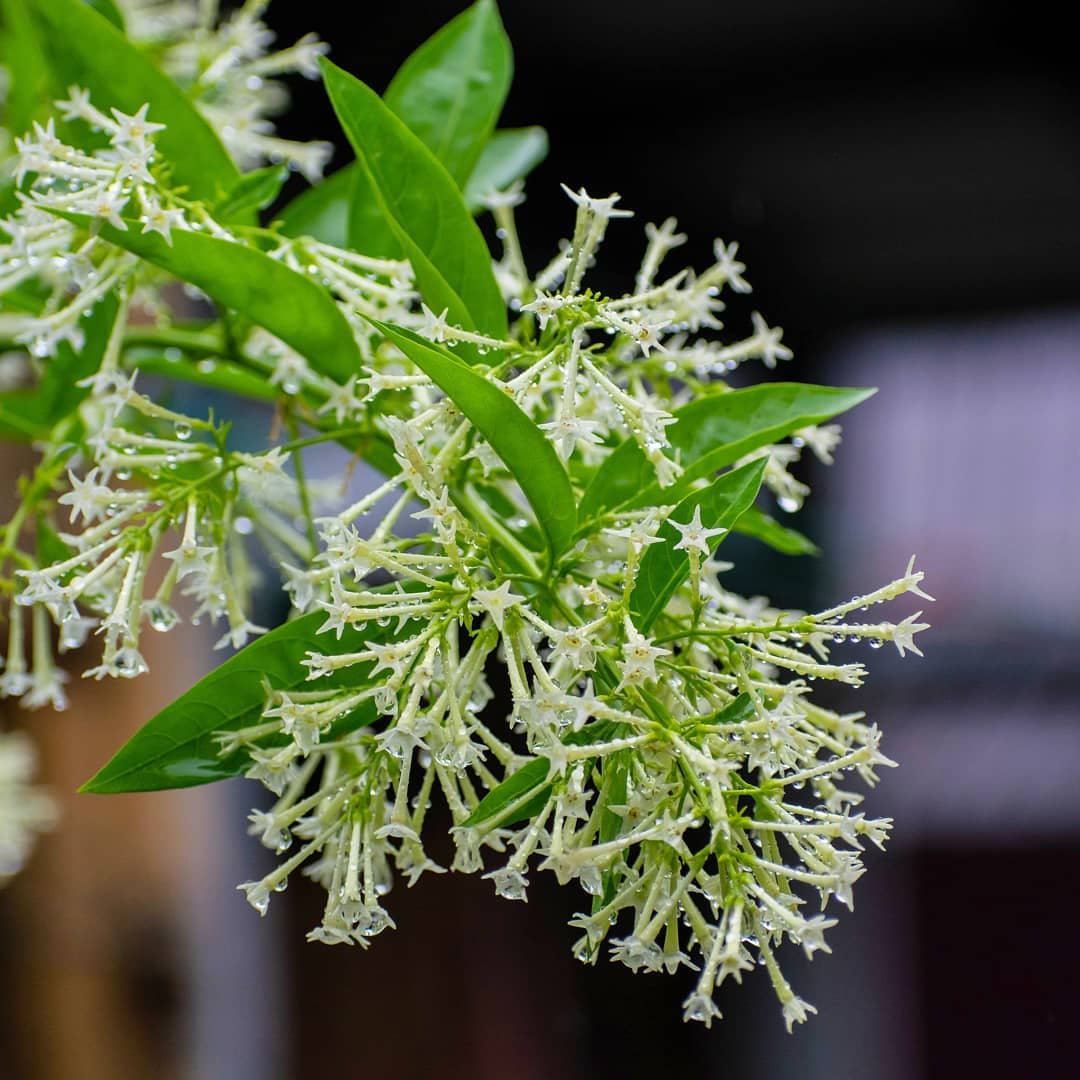Are you looking for a plant that is extremely beautiful and highly fragrant? End your search with Night-Blooming Jasmine.
Grow Night-Blooming Jasmine– the highly fragrant flower in your home and garden for a beautiful show of elegant blooms with an intoxicating scent.
Common Names: Night-blooming jasmine, Poisonberry, The Lady of the Night, Queen of the Night, and Night Blooming Jessamine
Botanical Name: Cestrum nocturnum
USDA Zones: 8b-11
Read about PUERTO RICO NATIONAL FLOWER
Night-Blooming Jasmine Information
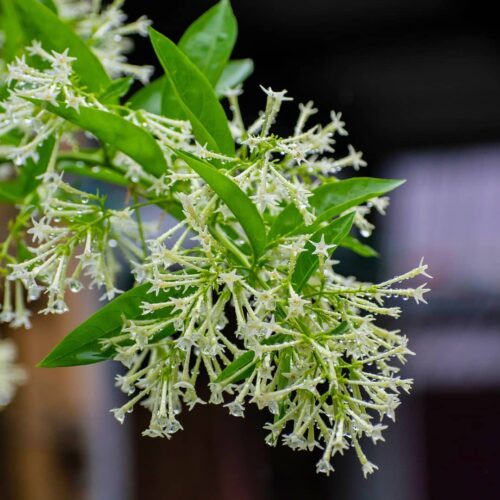
This fast-growing woody shrub from the Solanaceae family is not a true jasmine. The name derives from the five-petaled green-white or yellow tubular blooms that release fragrance during the night and attract various pollinators. Green leaves are glossy, pointed, and narrow. The fruits are small white berries that are mildly toxic.
Night-blooming Jasmine has a long flowering period with a sprawling growth habit; it can reach up to 8-10 feet tall and 4-6 feet wide.
It can be planted as a border hedge or in pots on patios. People also grow it in greenhouses or as a houseplant.
Read about sweet potato flowers HERE
How to Propagate Night-Blooming Jasmine
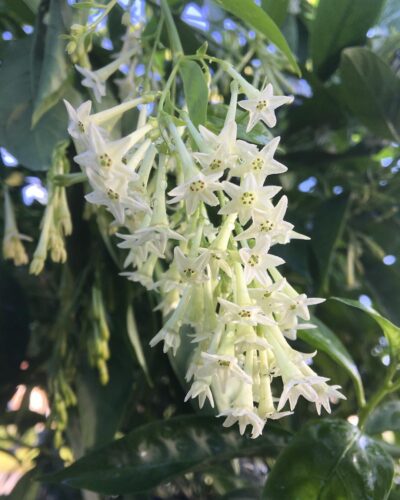
- You can grow this fast-growing shrub from the softwood cuttings.
- Take a healthy 4-6 inches long cutting with a node from the night-blooming jasmine plant during the fall.
- Keep the cuttings in a jar of water until new roots emerge; change the water twice a week or when it turns cloudy.
- Transplant the cutting to a pot filled with fertile, moist soil.
- Keep the pot in a location that gets bright, indirect light.
TIP: Avoid moving the plant outdoors until cold has passed and spring arrives.
Check the list of toxic flowers HERE
Propagate Night Blooming Jasmine (Cestrum nocturnum) from Seeds
Night-blooming Jessamine can be grown from seeds, but it’s not an easy task. You can purchase the seeds or allow the berries of the plant to ripen. When they drop naturally, sow the seeds of these berries in the warm, moist compost. If they sprout, the shoots will emerge in a month.
Note: While growing in the ground, plant it up to 3-4 feet apart during spring after the last frost has gone.
Check Cactus with White Flowers HERE
Pot Size for Growing Night-Blooming Jasmine
While propagating the plant from cutting, grow it in a 5-6-inch container. When it outgrows the existing pot, move it to a one-size larger container.
Keep the plant slightly root-bound for more flowers and quick growth.
Note: In tropical regions, it flourishes in moist conditions and can rapidly become uncontrollable. Florida, Oahu, Lanai, Maui, and Hawaii have declared night-blooming Jessamine invasive plant species.
Read HOW TO MAKE Christmas cactus bloom
Ideal Growing Conditions for Night-Blooming Jasmine
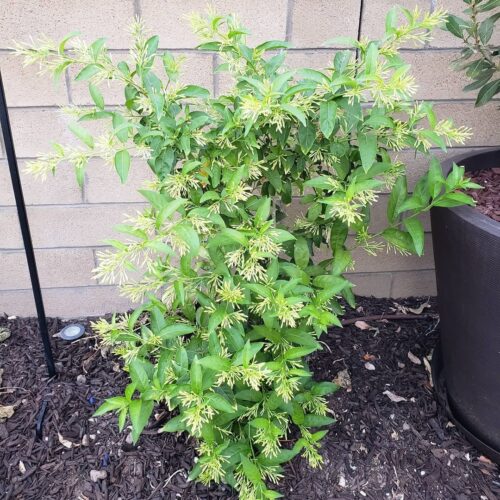
Light
Grow this plant where it gets at least 6-8 hours of direct sunlight daily. Though it can tolerate partial shade, too much shade can impact the quantity of flowers.
Soil
Plant night-blooming jasmine in well-draining, fertile, moist, sandy, and light soil with a neutral pH.
Water
It likes moist conditions and appreciates frequent watering for the growth of fragrant flowers. During the initial phase, water the plant many times a week. When roots develop, saturate the plant once a week.
In winter dormancy, mature plants have less watering needs.
Temperature and Humidity
These plants prefer warm temperatures, along with high humid conditions. Keep in mind that new growth cannot tolerate temperatures below 35 F, whereas mature plants can handle temperature ranges up to 25 F.
Note: When the temperature drops below 35 F in winter, move plants indoors by growing them in pots.
Read JACQUEMONTIA PENTANTHOS Care Guide
Night-Blooming Jasmine Care
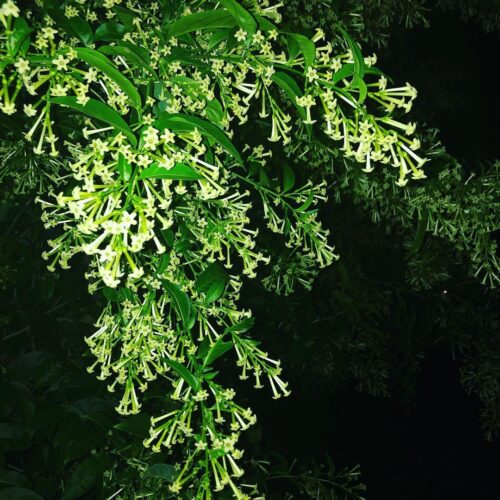
Fertilizer
For profuse blooming, grow this plant in fertile soil and feed monthly in the growth phase. Apply granular fertilizer with an NPK ratio of 10-10-8 as per instructions on the package. You can also use compost once annually.
Pruning
Prune the plant annually during fall after blooming to promote healthy new growth. It will also lower the invasiveness as long as seeds will not be spread by birds consuming berries.
Pests and Diseases
This deer-resistant plant is hardy and less susceptible to common issues. Occasionally, caterpillars and aphids can harm the plant. Get rid of aphids by using an insecticidal soap or neem oil. You can hand-pick caterpillars or allow them to transform into pollinating butterflies.
Read about MAGNOLIA VS. TULIP TREE: Differences
Toxicity
Entire plants, mainly berries, are poisonous to people and animals.
Find HOW TO GROW Nebraska State Flower
Can Night-Blooming Jasmine Grow Indoors?
You can grow this famous indoor plant where it receives plenty of sunlight for lots of flowers. Do remember that this plant loves humidity, so choose the location accordingly.

